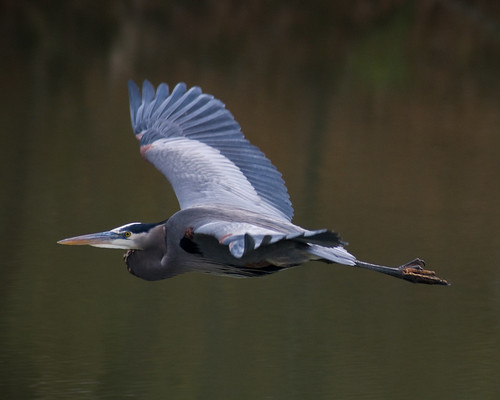
Where are they from?
Great blue herons live around both freshwater and saltwater habitats and they may also spend time around fields and grasslands. They can be found in most of the southern United States but are primarily found in the central and southeastern part of the United States.
What do they eat?
They are carnivores, and eat mostly fish. However, they will eat any small prey they can catch including reptiles, amphibians, small mammals, as well as insects.
How do they act?
Great blue herons do fly, and will do so by scrunching their necks into an “S” shape and letting their legs dangle out behind them. During breeding season, male and female great blue herons will remain monogamous for the mating season, meaning they only mate with each other. Their courtship is sophisticated, including nesting rituals such as males presenting materials for females to use when building their nests. However, once the next breeding season begins, the pair will choose new mating partners. Great blue herons are protective of their colony’s feeding ground and will display aggression by facing skyward, outstretching their wings, and charging at oncoming opposition.
Are they endangered?
Great blue herons are listed as “Least Concern” on the International Union of Conservation of Nature (IUCN) Red List of Threatened Species.
Bird Blurb
Even though the great blue heron can reach almost 4.5 feet tall, the bird weighs only 5-6 pounds! This is due in part to their lanky nature, but also because, like other birds, they have hollow bones!
How heavy do you think humans would be if we had hollow bones?
Source: https://www.allaboutbirds.org/guide/Great_Blue_Heron/id
